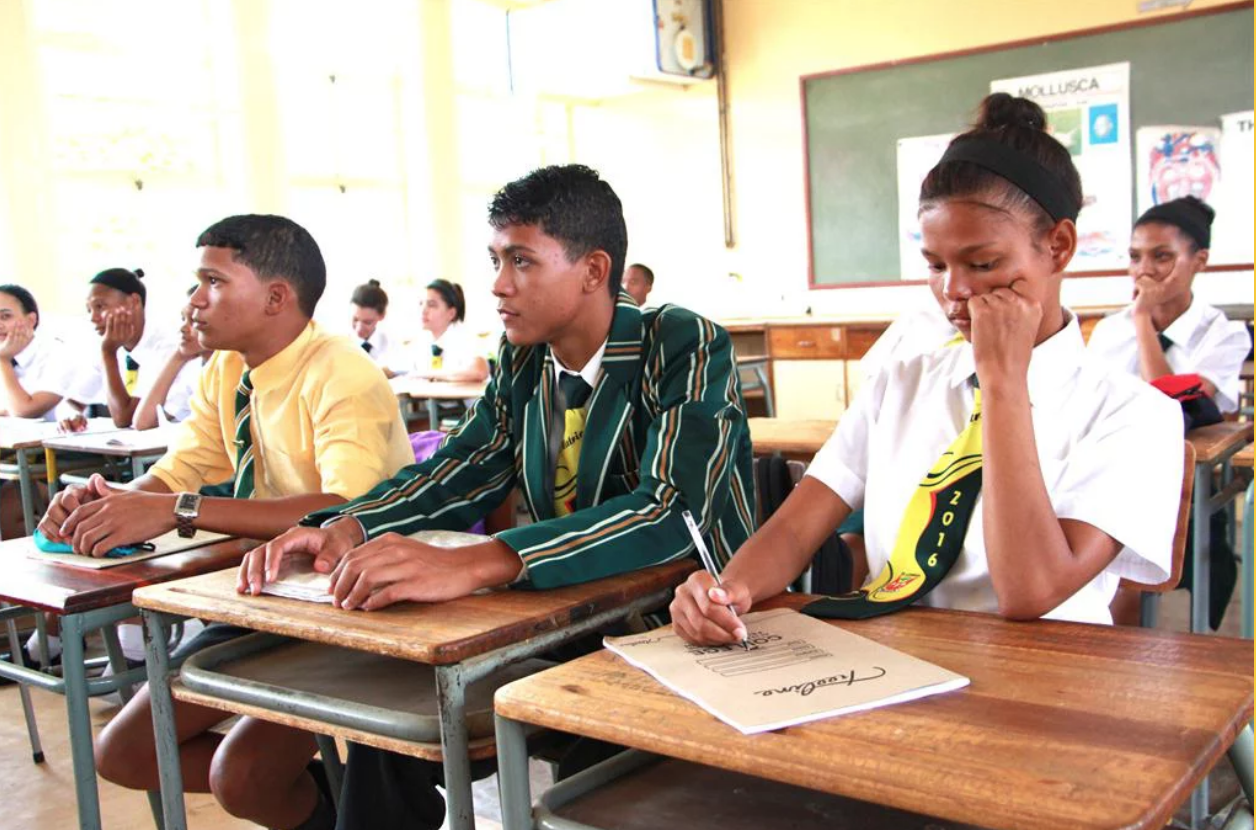With our Business Development Manager and Board Member, Brett Claydon, away in Namibia on his Peace Corps Volunteer journey, back here stateside, we have been looking into what Project-Based Learning can do for some of the school’s located at Brett’s site assignment.
We have had the opportunity to stay in contact with him during his Peace Corps service and learn more about Namibian culture, customs, the business environment, and of course, education. As part of his duty as a Peace Corps Volunteer, he must become integrated into his community and meet many individuals, organizations, and groups to do that successfully.
After chatting with him briefly, he was able to tell us a little bit about the education system in Namibia. In Namibia, education is compulsory or required by law for individuals aged 6 to 16. With a population roughly two million in size, there are 1500 schools and about 100 of them are privately owned. In all schools, regardless of private or government-owned (or public), students are required to wear uniforms.
Like the different levels of education within the United States, there are is a structure of levels of education in Namibia as well. Ranging from Pre-Primary Education to Secondary Education. Pre-Primary Education meaning preschool or kindergarten, Primary Education including Grades 1 through 7 and then Secondary Education, which then includes Grade 8 to Grade 12.
Since 2013 and 2016, primary education and secondary education in government schools have been free, respectively. However, university or tertiary education institutions, regardless if they are private or public, charge tuition.
When students or learners as they are called in Namibia, successfully complete Grade 10, they are presented with a Junior Secondary School Certificate. When students successfully complete Grade 12, they receive a Namibia Senior Secondary Education Certificate. This certificate is either the International General Certificate of Secondary Education, IGCSE, or the Higher International General Certificate of Secondary Education, HIGCSE. Both exams taken by students to achieve these certificates are moderated by the University of Cambridge, the latter’s exams being set and marked by the University where the former are set and marked in Namibia.

When talking about tertiary education in Namibia, two institutions will usually come up. They are the Namibia University of Science and Technology (NUST) and the University of Namibia (UNAM). In addition to these two, there are many tertiary institutions that specialize in the arts such as the College of the Arts in Windhoek, the University Centre for Studies in Namibia, across many cities in Namibia, the Namibian Maritime and Fisheries Institute in Walvis Bay, on the coast, and the Namibian Institute of Mining and Technology in Arandis, an old uranium mining town.
So, with all of these schools, institutions, and centers for education, the possibilities to implement PBL methods and programs are extensive. Yet, it is not as simple as simply developing a plan and then putting it to work…
“When formulating a strategy or program here, you have to understand the culture, establish meaningful relationships, and see what resources are available before beginning anything.” This is what Brett told us as we briefly spoke with him over a scratchy phone call a week ago. He emphasized that getting to know community members, leaders, and movers and shakers within a community can make or break your proposed program.

However, he did mention that there is a strong sense of community spirit in his site and he has met with both the government and private school principals, and they take whole-hearted pride in their institutions, their students and the community they are in. As far as PBL goes, Brett stated, “Yeah, they’re interested in it and seeing how it can be used in their schools amongst their learners and connecting them to solving issues within the community such as increasing the amount of small businesses, creating an innovation center for entrepreneurs or working with the local community garden here.”
At Educators of America, we hope that we can assist Brett in introducing the concepts and methods of PBL to his community and spark a project that can grow and expand students’ opportunities and abilities while enhancing the student-teacher relationship.
For now, we remain stateside but looking down the road, international ventures may seem sooner than we think.
If you are interested in learning more about Education in Namibia, visit the Ministry of Education website or if you are curious to see what Brett has been up to in Namibia, follow his blog here.
